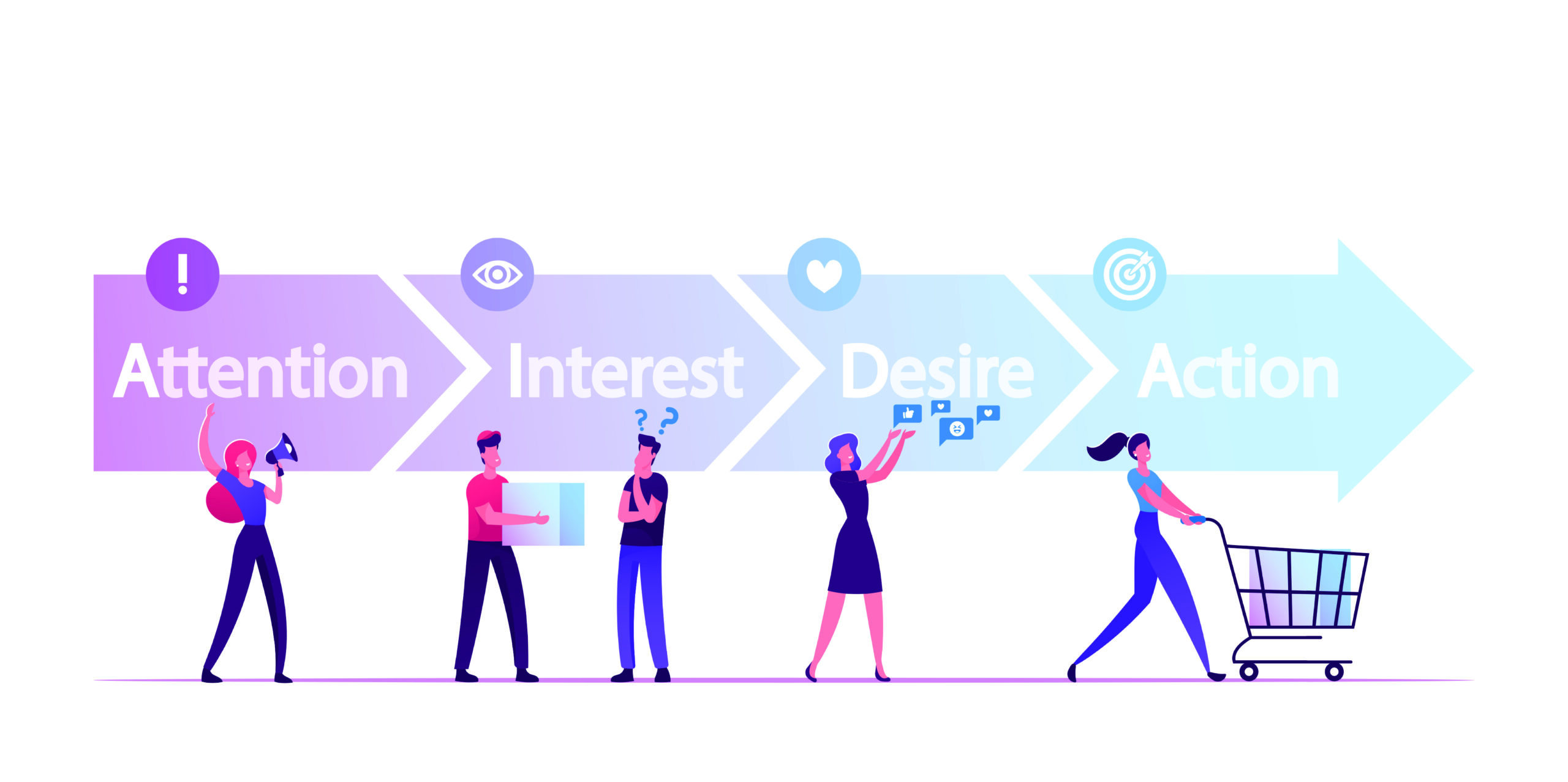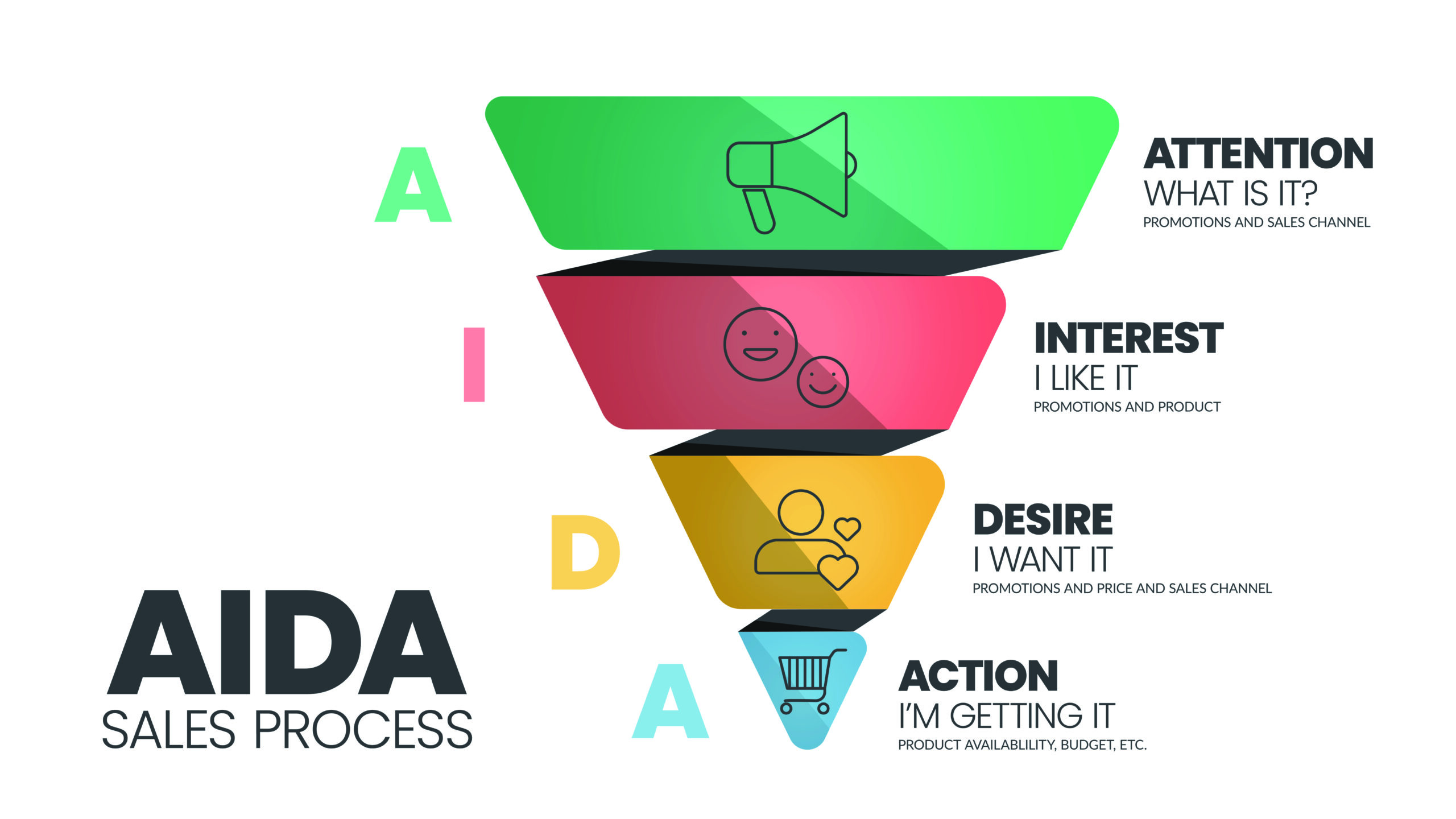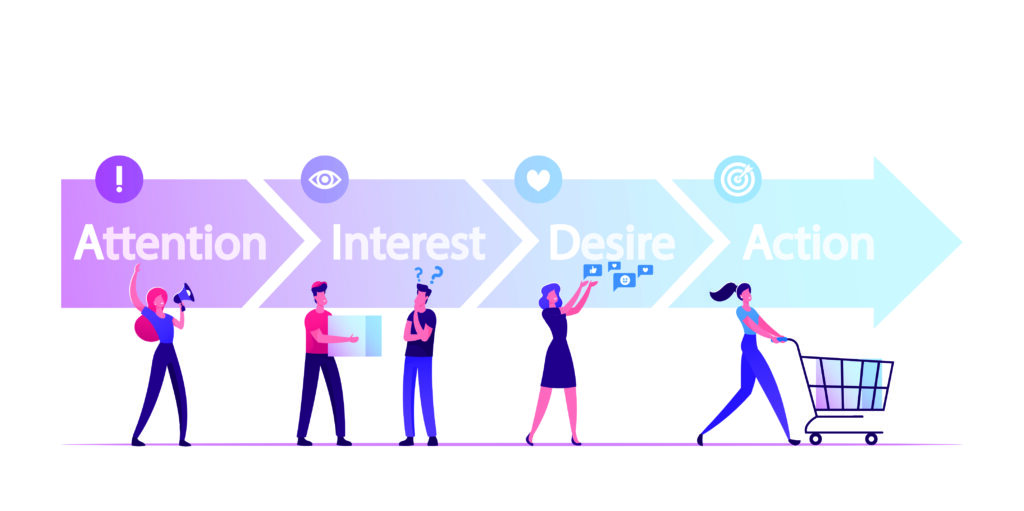
At the cutting edge of marketing, obtaining and holding onto consumer interest is complex. The AIDA marketing model, considered a time-proof instrument and highly operational, simplifies it by breaking the process into four critical stages: Attention, Interest, Desire, and Action. Therefore, understanding how this model operates is vital for marketers who set a goal to prepare influential campaigns that will perform a directive function in orienting an individual along the decision-making path.
In this article, we delve into the central aspects of the AIDA model, its historical background, how it works, and the benefits and weaknesses of the ever-changing marketing landscape.
What is the AIDA Marketing Model?

AIDA in marketing stands for Attention, Interest, Desire, and Action. This model becomes useful for any given company while trying to identify more customers. It guides them through four stages in a bid to turn prospects into paying customers. AIDA model in digital marketing works by capturing the attention of people to create brand awareness. As such, maintaining interest would be instrumental in generating desire as well as getting action.
AIDA stands for a structured approach in conjunction with all the other market segmentation techniques and targeted marketing messages. Knowing the AIDA model guides organizations in structuring a more effective marketing campaign that successfully transforms their prospects.
As an example, when generating a high-converting landing page, you would:
- Craft a compelling title to capture the reader’s attention.
- Increase interest in the involvement of crucial information or upgrade of a product or service with its benefits.
- Highlight the importance of the offer to generate desire for the customer
- Provoke the user to take the next step by using a call-to-action button.
The AIDA framework is applied to various marketing activities, including copywriting and email campaigns. If used correctly within your digital marketing strategy, AIDA can increase conversions and engagement on a massive scale.
History of Marketing Funnel AIDA
Elias St. Elmo Lewis designed the AIDA plan in early 1898, and it has since been used in many industries.
The AIDA model remains relevant to date, and its applicability in many businesses has become one sure way of increasing sales and having a vast base of customers turned towards their products. If you want to make your marketing campaign more impactful, incorporating the AIDA model in your operations is the way to go.
The AIDA model is used with other marketing strategies, such as market segmentation and target marketing. This way, the AIDA model helps organizations develop better campaigns that can ensure the transformation of prospects into good customers.
Four Stages of the AIDA Model

AIDA model comprises the following four steps:
Attention (or Awareness)
Marketers first have to catch customers’ attention to make them aware of a product or a service. Among the ways this can be achieved is by ensuring ads are seen in unique and prominent places. Nowadays, another tactic increasingly applied is personalization of content: personalized messages, somewhat like one-to-one marketing, are more captivating and hard not to notice than generic marketing techniques.
Another way is through shock value advertising, where provocative images or messages are used to elicit strong emotions. Companies should use this tactic very carefully to ensure they are staying in line with their brand image and avoid reputational damage.
Interest
Once the potential customer’s attention is captured, the next thing is to sustain interest long enough to disseminate information about the product or service. This can be done through concise information about an interesting character, voice actor, or mascot that charms the audience. Such benefits can easily be made known to the target audience through persuasive content marketing in order to increase their chances of moving to the desired stage of the AIDA funnel.
Desire (or Decision)
Companies need to not only show the product’s superiority and versatility but also make people develop a desire to possess the same. The presentation of a strong value proposition is important alongside building an emotional connection with the customer rather than merely transactional aspects of the offering.
Gaining the buyer’s trust through interactive content, enabling him to perceive a better future through the product in question, and finally, building social proof will spur decision-making. Blogs, case studies, and testimonials are just a few of the tools that can be very effective in this stage in really helping the consumer decide on the company’s offering and ultimately complete a transaction.
Action
In the final step of the AIDA model, it is very important to create a call to action that will spur the already interested customer into action. This can include overcoming any lingering objections, such as the initial quote of a high price that is then lowered or specifying special deals, including buy-one-get-one-free and free delivery.
The product’s perceived value should be improved to increase the customer’s motivation and reduce doubts. It is also essential to leave a long-lasting good impression because the customer may still purchase even if the sale was not made. A good impression remains in the mind, and the customer is more likely to come back later.
Advantages of the AIDA Framework

The many benefits of the AIDA framework have made it so popular among marketers in crafting effective campaigns. Indeed, with the AIDA model, the customer journey is essentially broken down into four clear stages that provide a roadmap for engaging and converting the potential customer. Here are four key advantages of using the AIDA framework:
1. Clear Structure and Focus
The AIDA model results in an organized way of marketing, in which all facets of the customer cycle get dealt with in a given sequence systematically. The Attention, Interest, Desire, and Action model facilitates marketers in fashioning campaigns that logically take their potential customers through the four stages. The unmistakable outline permits crafting strategies that are more targeted at each stage; hence, better coherence is provided in the marketing efforts.
2. Improved Customer Interaction
AIDA enables marketers to create messages that resonate with the customers at all stages of their decision cycle. Once the model generates attention, it keeps up the interest to ensure that the potential customer remains with the brand. Therefore, custom content and personalized messages have higher chances of attracting attention and drawing a customer to do something by increasing conversion rates.
3. Better Conversion Rates
Therefore, The AIDA model will significantly improve conversion rates if customers’ needs and motivations are addressed at each stage. It focuses on building desire and developing actions to ensure that marketing efforts are geared at getting customers to buy your product or service. Actions such as the perfect call to action to make the urge in a potential customer’s mind to purchase and strategies devised for alleviating the possible objections of a buyer further increase the chances of closing.
4. Versatility Across Marketing Channels
The AIDA framework is quite flexible for use in digital marketing, print advertising, or even face-to-face sales. In other words, the principles remain the same regardless of whether one is writing a landing page, designing an email campaign, or creating a social media ad. This thus gives all marketers the flexibility they need when it comes to creating a stream of campaigns on different platforms.
Generally, the structured approach, emphasis on engagement, capacity to enhance conversion rates, and flexibility of modern marketing’s AIDA framework make it a must-use tool for any marketer looking to run a campaign successfully.
Disadvantages of the AIDA Framework
Though many benefits are endowed with the AIDA framework, it is also supplied with some limitations. For marketers, understanding the limitations is very necessary to make informed decisions on the use of this model and when to use it. Here are four significant flaws of the AIDA framework:
1. Linearity Approach
In real life, the linear progression of the AIDA model is not always adhered to. Most go in either direction, repeating previous steps or even skipping some altogether. This makes the model a bit rigid in capturing all the dynamics and unpredictability of modern consumers.
2. Limited Post-Purchase Behavior Focus
AIDA is based mainly on the steps before the purchase decision and fails to account for the post-purchase phase. Retention, after-purchase satisfaction, and customer advocacy are instrumental in giving businesses the much-needed long-term planning that AIDA does not address. So, marketing practitioners must use AIDA with other models or strategies to make it wholesome and cover post-purchase engagement and loyalty.
3. Oversimplification of Consumer Behavior
The AIDA framework may oversimplify complex consumer behavior into four clear stages. This simplification can miss all the subtleties in individual customer experiences and motivations. Emotional precipitators, social pressures, and personal preferences are significant drivers in decisions.
4. Inflexibility in Digital Environments
The traditional approach of the AIDA model limits its flexibility, particularly in the very dynamic digital marketing environment where it has to address upcoming trends and emerging technologies. Digital marketing is often real-time engagement, where speedy customer interactions occur and need rapid responses, not necessarily fitting step-by-step in the AIDA framework.
While on the one hand, the AIDA framework does offer an excellent framework to guide any potential customer through to the decision-making point, on the other, compilation of linearity, narrowed focus on post-purchase behavior, simplification of consumer behavior, and inflexibility to digital contexts suffice as the significant limitations. Marketers should be aware of this and seek further to integrate more models and strategies for dealing with modern complexities in consumer behavior.
Conclusion
AIDA marketing model remains a great framework to use when trying to shepherd patronage of the probable customer through the decision-making process because it has clear structures through which to engage with him. Although there are outstanding benefits of improving conversion rates, such as versatility across marketing channels, marketers should equally pay attention to the limitations of its applications.
The linearity of this model, the oversimplification it provides for the behavior of consumers, and the lack of discussion of activities concerning post-purchasing engagement suggest additional strategies necessary to represent the entire customer cycle journey. Knowing the strengths and weaknesses of the AIDA framework helps marketers design more well-rounded campaigns that are more likely to succeed long-term.



